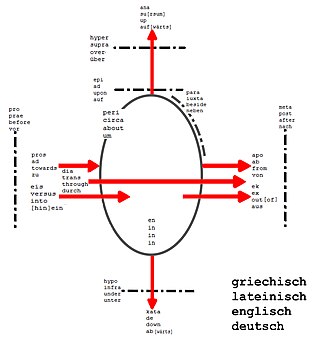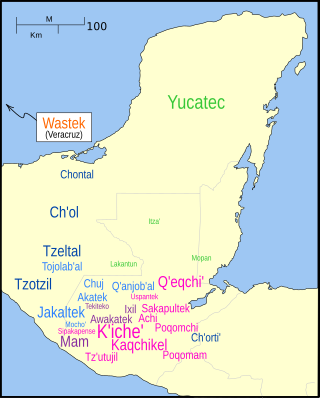In linguistics, an affix is a morpheme that is attached to a word stem to form a new word or word form. The main two categories are derivational and inflectional affixes. The first ones, such as -un, -ation, anti-, pre- etc, introduce a semantic change to the word they are attached to. The latter ones introduce a syntactic change, such as singular into plural, or present simple tense into present continuous or past tense by adding -ing, -ed to a word. All of them are bound morphemes by definition; prefixes and suffixes may be separable affixes.
A morpheme is the smallest meaningful constituent of a linguistic expression. The field of linguistic study dedicated to morphemes is called morphology.

In linguistics, morphology is the study of words, how they are formed, and their relationship to other words in the same language. It analyzes the structure of words and parts of words such as stems, root words, prefixes, and suffixes. Morphology also looks at parts of speech, intonation and stress, and the ways context can change a word's pronunciation and meaning. Morphology differs from morphological typology, which is the classification of languages based on their use of words, and lexicology, which is the study of words and how they make up a language's vocabulary.

A prefix is an affix which is placed before the stem of a word. Particularly in the study of languages, a prefix is also called a preformative, because it alters the form of the word to which it is affixed.
An analytic language is a type of natural language which breaks up concepts into a series of root/stem words accompanied by prepositions, postpositions, particles and modifiers, using affixes very rarely, as opposed to synthetic languages which synthesize many concepts into a single word, using affixes regularly. Syntactic roles are assigned to words primarily by the word order. For example, by changing the individual words in the Latin phrase fēl-is pisc-em cēpit "the cat caught the fish" to fēl-em pisc-is cēpit "the fish caught the cat", the fish becomes the subject, while the cat becomes the object. This transformation is not possible in an analytic language without altering the word order. Typically, analytic languages have a low morpheme-per-word ratio, especially with respect to inflectional morphemes. No natural language, however, is purely analytic or purely synthetic.
Morphological derivation, in linguistics, is the process of forming a new word from an existing word, often by adding a prefix or suffix, such as un- or -ness. For example, unhappy and happiness derive from the root word happy.

In linguistics, agglutination is a morphological process in which words are formed by stringing together morphemes, each of which corresponds to a single syntactic feature. Languages that use agglutination widely are called agglutinative languages. For example, in the agglutinative language of Turkish, the word evlerinizden consists of the morphemes ev-ler-iniz-den, literally translated morpheme-by-morpheme as house-plural-your(plural)-from. Agglutinative languages are often contrasted with isolating languages, in which words are monomorphemic, and fusional languages, in which words can be complex, but morphemes may correspond to multiple features.
A root is the core of a word that is irreducible into more meaningful elements. In morphology, a root is a morphologically simple unit which can be left bare or to which a prefix or a suffix can attach. The root word is the primary lexical unit of a word, and of a word family, which carries aspects of semantic content and cannot be reduced into smaller constituents. Content words in nearly all languages contain, and may consist only of, root morphemes. However, sometimes the term "root" is also used to describe the word without its inflectional endings, but with its lexical endings in place. For example, chatters has the inflectional root or lemma chatter, but the lexical root chat. Inflectional roots are often called stems, and a root in the stricter sense, a root morpheme, may be thought of as a monomorphemic stem.
A synthetic language is a language which is statistically characterized by a higher morpheme-to-word ratio. In contrast to analytic languages, which break up concepts into separate words, synthetic languages combine (synthesize) them into a single word. Syntactic roles embodied by a word, such as a subject or an object, are assigned by adding affixes. In the present-day English, once a fusional language, only a few remnants of its fusional origin are retained: for example, the role of an object is assigned to the word "who" by adding affix "m" to it ; tense is assigned by adding -ed and -ing to a verb; a possessive role is assigned by adding an apostrophe and 's' to it; by adding affix -er either a comparative form is assigned or verb is turned into a noun (teach-er). Analytic languages predominantly use auxiliary verbs and word order.

Tzeltal or Tseltal is a Mayan language spoken in the Mexican state of Chiapas, mostly in the municipalities of Ocosingo, Altamirano, Huixtán, Tenejapa, Yajalón, Chanal, Sitalá, Amatenango del Valle, Socoltenango, Las Rosas, Chilón, San Juan Cancuc, San Cristóbal de las Casas and Oxchuc. Tzeltal is one of many Mayan languages spoken near this eastern region of Chiapas, including Tzotzil, Chʼol, and Tojolabʼal, among others. There is also a small Tzeltal diaspora in other parts of Mexico and the United States, primarily as a result of unfavorable economic conditions in Chiapas.

Halkomelem is a language of various First Nations peoples of the British Columbia Coast. It is spoken in what is now British Columbia, ranging from southeastern Vancouver Island from the west shore of Saanich Inlet northward beyond Gabriola Island and Nanaimo to Nanoose Bay and including the Lower Mainland from the Fraser River Delta upriver to Harrison Lake and the lower boundary of the Fraser Canyon.
In linguistics, a suffix is an affix which is placed after the stem of a word. Common examples are case endings, which indicate the grammatical case of nouns and adjectives, and verb endings, which form the conjugation of verbs. Suffixes can carry grammatical information or lexical information . Inflection changes the grammatical properties of a word within its syntactic category. Derivational suffixes fall into two categories: class-changing derivation and class-maintaining derivation.

Tiipai (Tipay) is a Native American language belonging to the Delta–California branch of the Yuman language family, which spans Arizona, California, and Baja California. As part of the Yuman family, Tiipai has also been consistently included in the controversial quasi-stock Hokan. Tiipai is spoken by a number of Kumeyaay tribes in northern Baja California and southern San Diego County, California. There were, conservatively, 200 Tiipai speakers in the early 1990s; the number of speakers has since declined steadily, numbering roughly 100 speakers in Baja California in a 2007 survey.
This article presents a brief overview of the grammar of the Sesotho and provides links to more detailed articles.
Odia grammar is the study of the morphological and syntactic structures, word order, case inflections, verb conjugation and other grammatical structures of Odia, an Indo-Aryan language spoken in South Asia.

In linguistic morphology, inflection is a process of word formation in which a word is modified to express different grammatical categories such as tense, case, voice, aspect, person, number, gender, mood, animacy, and definiteness. The inflection of verbs is called conjugation, and one can refer to the inflection of nouns, adjectives, adverbs, pronouns, determiners, participles, prepositions and postpositions, numerals, articles, etc., as declension.
Maia is a Papuan language spoken in the Madang Province of Papua New Guinea, and is a member of the Trans-New Guinea language family. It has a language endangerment status of 6a, which means that it is a vigorous and sustainable language spoken by all generations. According to a 2000 census, there are approximately 4,500 living speakers of the language, who are split between twenty-two villages in the Almani district of the Bogia sub-district.
Mekéns (Mekem), or Amniapé, is a nearly extinct Tupian language of the state of Rondônia, in the Amazon region of Brazil.
In etymology, back-formation is the process or result of creating a new word via inflection, typically by removing or substituting actual or supposed affixes from a lexical item, in a way that expands the number of lexemes associated with the corresponding root word. The resulting is called a back-formation, a term coined by James Murray in 1889.
A content morpheme or contentive morpheme is a root that forms the semantic core of a major class word. Content morphemes have lexical denotations that are not dependent on the context or on other morphemes. For instance, in English, the abstract noun beauty may mean 'pleasing quality'. Adding the causative verbal suffix -fy produces the verb beautify 'to make pleasing'. By adding the suffix -ful, the adjective beautiful is formed. Further adding the adverbializer -ly produces the adverb beautifully. The various functional morphemes surrounding the semantic core are able to modify the use of the root through derivation, but do not alter the lexical denotation of the root as somehow 'pleasing' or 'satisfying'.